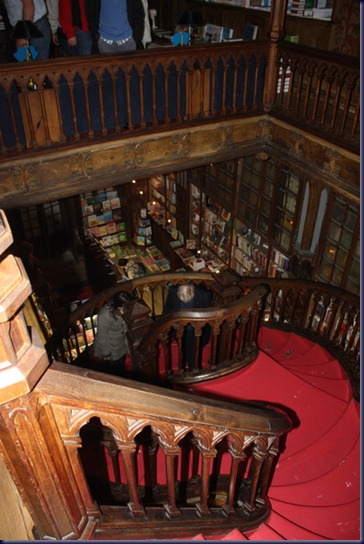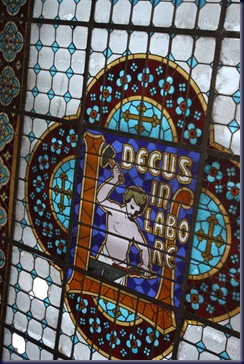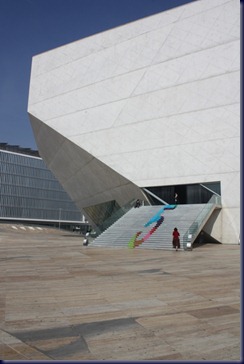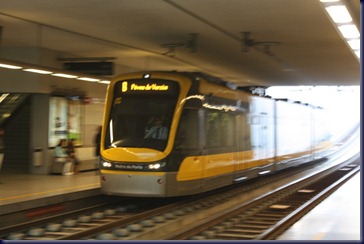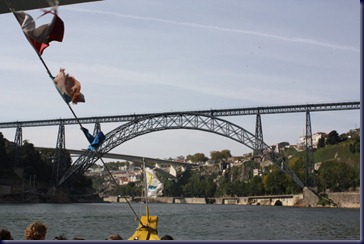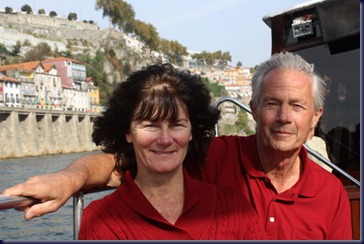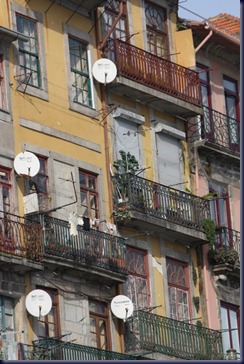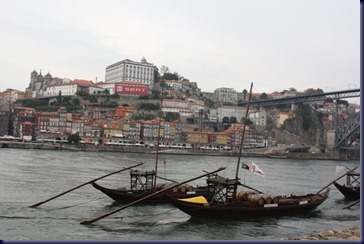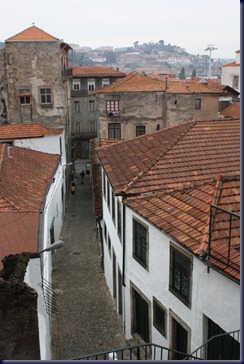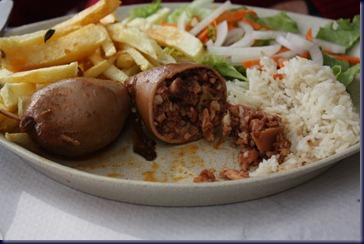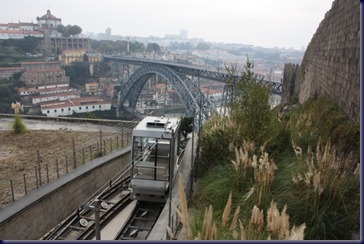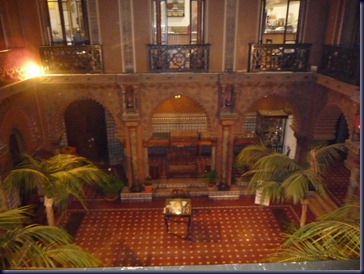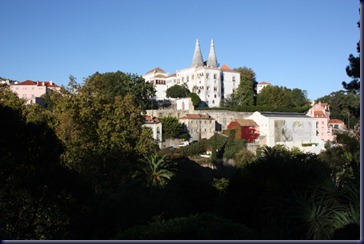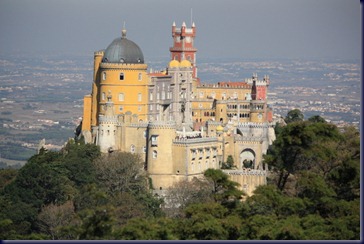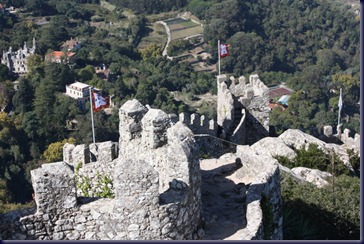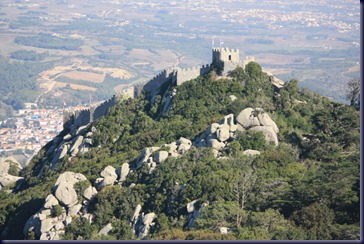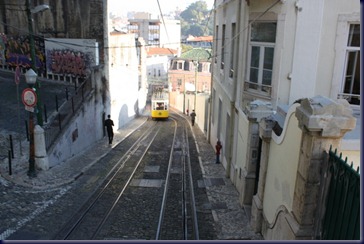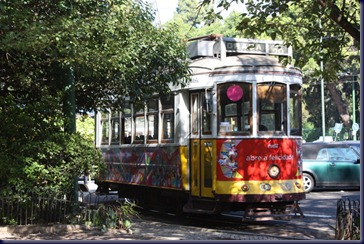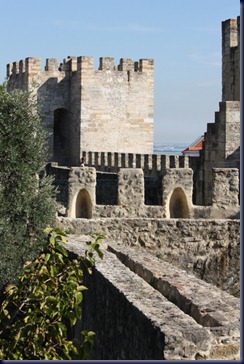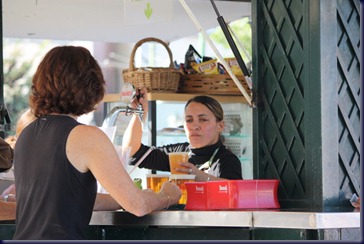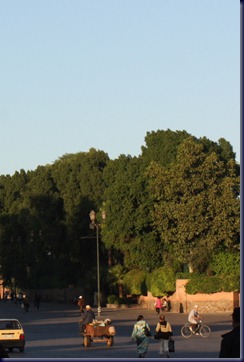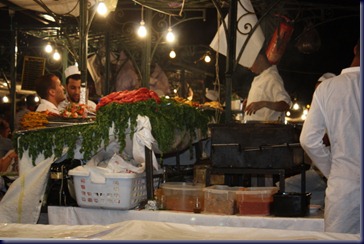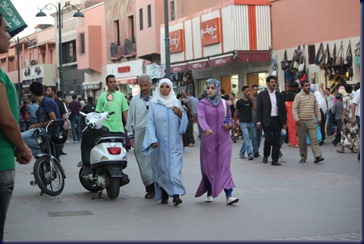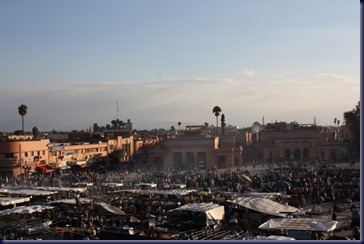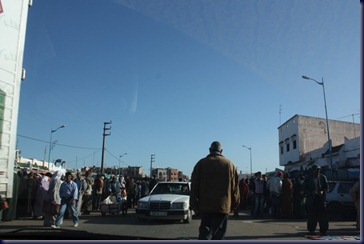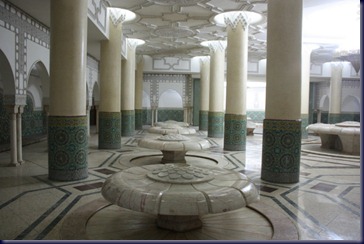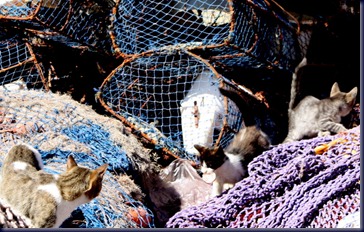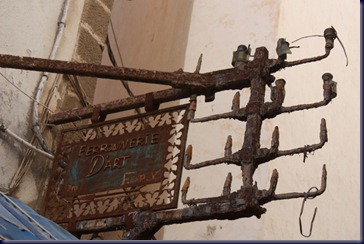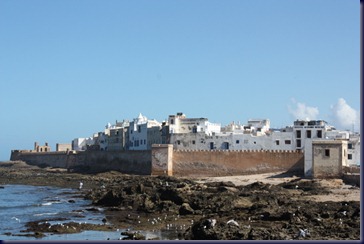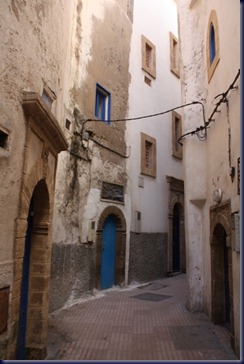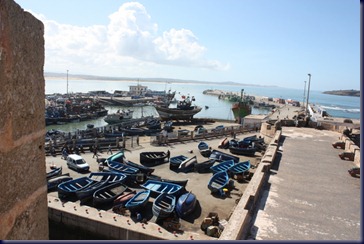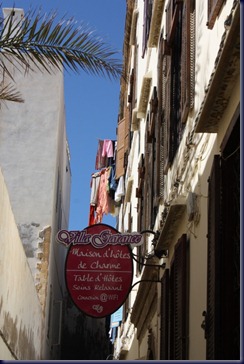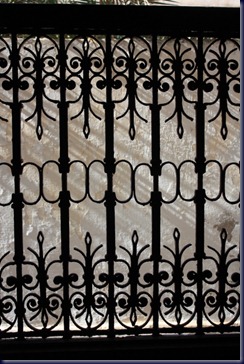Most of our blog posts are drafted by one of us, edited and finalized by the other, hence no claim of authorship. This post is all Cathryn.
We obtained our airline tickets for this trip using miles, and didn’t have enough for two tickets on any one airline, so are traveling separately. We underestimated how much we’d hate that and have vowed not to do it again. Domestically it would be fine, but not internationally.
It’s 5am Tuesday, and Bob just got in a taxi headed to the Marrakesh airport. Marrakesh and Lisbon are both “minor” ports, so there are few direct flights between the two, and not every day. Bob is flying Ryanair to Madrid, then Easy Jet to Lisbon, arriving 3 hours before I do. I catch a cab to the airport at 3pm, but have a rare direct flight to Lisbon on Portugalia. We’ll meet there at 8:30 tonight.
I leave Morocco with mixed feelings. This is a fascinating country, and we’ve enjoyed much of it: the beautiful scenery and villages in the Atlas Mountains, the ancient, amazing walled fortresses (both homes and towns), the vast Sahara desert where it’s hard to comprehend how people eek out a life, the lovely Atlantic coast where harbors teem with hard-working fishermen, and the vibrant cities full of astonishing colors, sounds, smells and lively people in the souks (markets). It feels foreign, exotic and in some ways unknowable, at least to this casual, short-term traveler.
The fact we speak no Arabic or Berber, and only a tiny smattering of French, while most people here don’t speak English, has made it challenging – more so than other travel we’ve done in Europe (where almost everyone speaks some English) or Central America where we get by fine in Spanish. Even in East Africa where we traveled in 2008, more English was spoken than it is here.
The fact this is a Muslim country adds to the feeling of difference: the muezzin’s call to prayer, heard 5 times daily in every city or village, the crowd of men coming out of the mosques afterwards, the rarity of alcohol, the women in heavy robes and scarves while men are more often in western attire, and the fact that public spaces are largely populated by men, with women seen mostly in the context of shopping for food. I’ve not felt at all the object of sexual harassment as is sometimes the case in latin american countries. Moroccan men, according to Bob, are busy “checking out” the Moroccan women, but not the western women. Moroccan men in hotels, restaurants and taxis treat me the way most men at home do – friendly, helpful or factually informative, as called for.
The difficult aspects of travel here, in addition to language, have been driving and navigating in big cities, and in the end, for me, the feeling of vulnerability inspired by the assault on Bob night before last. I’m also reminded that after two and a half weeks living out of a suitcase, moving between hotels frequently, I get tired of that and want to settle somewhere, or be in our Arctic Fox trailer where we feel “at home”, even when we’re not.
Bob seems to have recovered psychologically from the shock of the assault. His lower lip is swollen, his chin still abraded, his teeth and jaw a bit sore, and he took Tylenol every 4 hours yesterday for a persistent headache – but he claims to feel “fine” the first 3 hours or so after each taking of Tylenol. Oddly, it seems I’m more upset by having seen him hit, than he now seems by it having happened to him.
So . . . on to Portugal where we expect things to feel more familiar, though we’ve never been there and speak no Portugese.
We’re very glad we came to Morocco and also are not sad to be leaving.
![home%20sweet%20home[1] home%20sweet%20home[1]](http://lh6.ggpht.com/_p5AIn6wuCIU/TMoamb0iGyI/AAAAAAAAXDs/7kC2xMzlShI/home%20sweet%20home%5B1%5D_thumb%5B1%5D.jpg?imgmax=800)
![cuba_400px[1] cuba_400px[1]](http://lh6.ggpht.com/_p5AIn6wuCIU/TMoanYWae6I/AAAAAAAAXD0/sL42lvlglP8/cuba_400px%5B1%5D_thumb%5B1%5D.jpg?imgmax=800)
![birdcage[1] birdcage[1]](http://lh5.ggpht.com/_p5AIn6wuCIU/TMoao2VXskI/AAAAAAAAXD8/2lPfjYrWhGY/birdcage%5B1%5D_thumb%5B1%5D.jpg?imgmax=800)
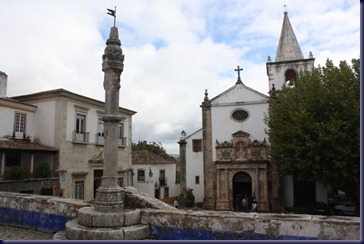
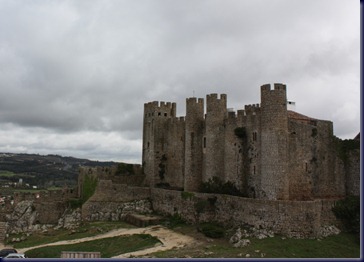
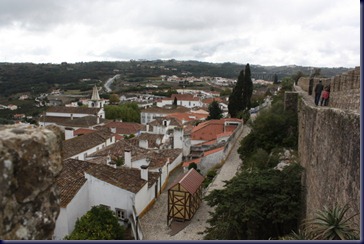
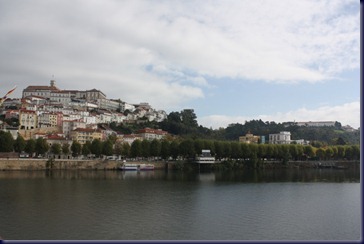

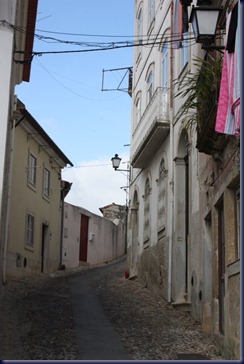
![2226358959_b06d454f0e[1] 2226358959_b06d454f0e[1]](http://lh6.ggpht.com/_p5AIn6wuCIU/TMRkzGypekI/AAAAAAAAXDM/SBEYu_CAjMA/2226358959_b06d454f0e%5B1%5D_thumb%5B1%5D.jpg?imgmax=800)
